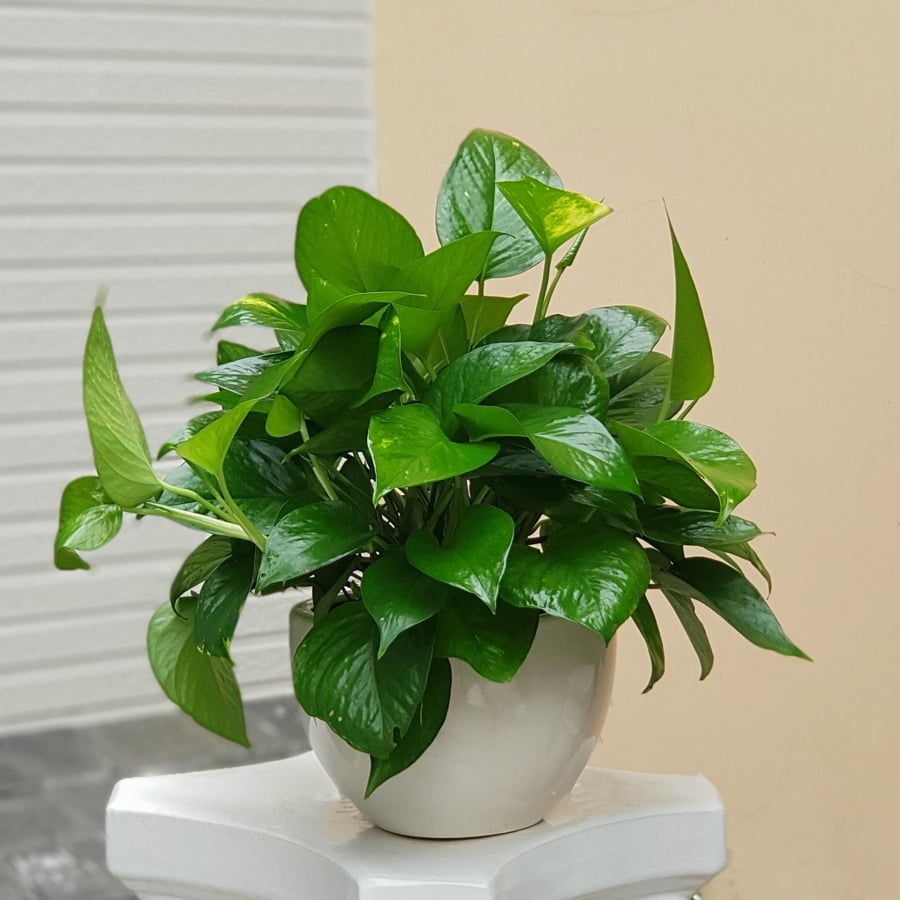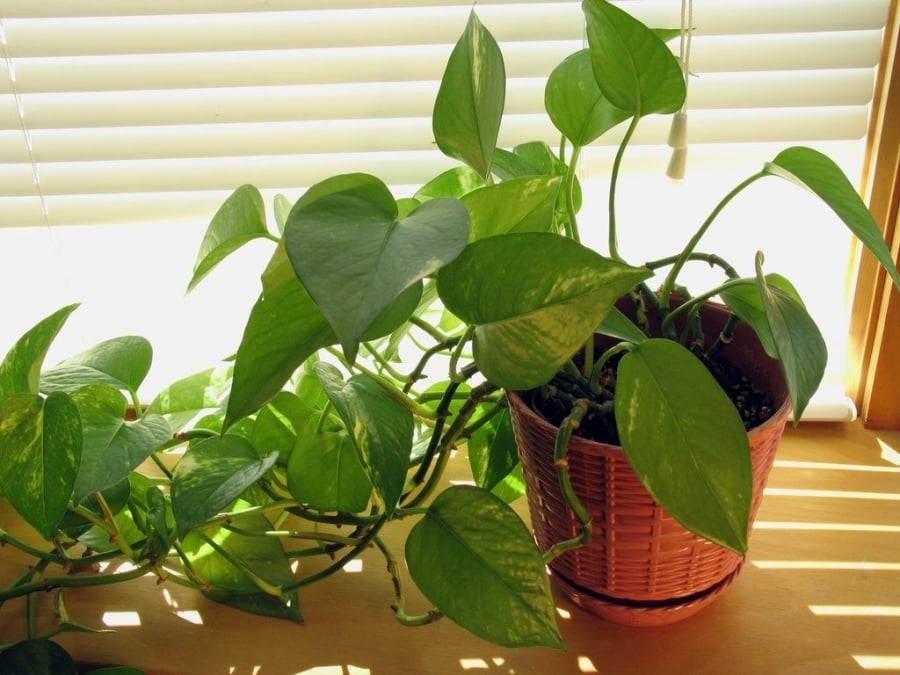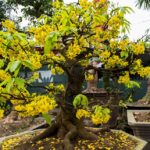The money tree has lush green leaves all year round, large and heart-shaped, which look very beautiful and are beneficial for feng shui. It is popularly grown indoors. In addition, the money tree has the ability to absorb toxins, radiation from electronic devices, and dust in the air. The money tree usually grows well without requiring too much care if you know this little trick.
1. Choose the right planting soil
The planting soil is particularly important for the development of the money tree. This type of tree prefers loose, fertile soil with good drainage. If the soil is hard, compacted, and nutrient-poor, the tree will not be able to thrive.
When choosing the soil for planting the money tree, you should use the following soil mixing method: garden soil: leaf mold: sand = 5:3:2. You can also use peat soil, add sand, add leaf mold or pearl stones. Once you have good soil, there is no reason for the tree not to thrive. You will see that the leaves grow faster, larger, and shinier. If the soil is not good, no matter how carefully you take care of the tree, it will struggle to grow and look lifeless.

2. Lighting
Lighting is also an important factor to consider when planting money trees. If the money tree turns from green to slightly yellow or there are spots on the leaves or leaf drop, it may be related to lighting.
You should place the money tree in a partially shaded area so that it has plenty of leaves and beautiful green leaves. Avoid placing the tree in direct sunlight during the summer and fall as it will cause the leaves to turn yellow and burn.
3. Watering
In addition, if you plant the money tree in a pot inside the house, the soil should not be too wet. If the soil is wet for a long time, it will cause root rot and leaf drop. Therefore, the amount of water for the tree should be controlled at a reasonable level.
4. Temperature
The money tree thrives in temperatures ranging from 20 to 25 degrees Celsius. If the temperature is too low or too high, it can affect the tree’s ability to grow.
5. Fertilizing
In reality, the money tree does not need additional fertilizers if the planting soil already has sufficient nutrients. However, if you want to accelerate the growth of the tree, you can use organic fertilizers every 4-6 months or after a new growth period of the tree.
If you have a fish tank at home, use the water from the tank to water the money tree. The water in the fish tank contains fish waste and other substances, which are beneficial for the tree’s growth. When the tree is lacking nutrients, you can add a little diluted cake fertilizer to the water for the tree. You can also take some leaf litter, mix it with water, and use it to water the tree to promote better growth.
Some common diseases of the money tree

+ Leaf yellowing disease
Money trees with yellow leaves usually have signs such as the leaves gradually turning yellow, fading and falling off. Depending on the cause of the disease, the yellow leaves on the tree may have different variations. Usually, older leaves will turn yellow earlier than young leaves. The money tree’s leaves can be yellow in patches or entirely yellow. In some cases, the leaves turn yellow around the edges and gradually spread inward. Yellowing leaves on the money tree can have various causes. Below are some of the main causes of leaf yellowing on money trees:
– Excessive watering: Over-watering the plant, more than its needs, can cause the leaves to turn yellow. Excessive watering can make the soil environment wet, unable to drain properly, which can lead to root rot. This is a good condition for fungal diseases to attack the plant. Rotting and waterlogged roots will cause the leaves to turn yellow and fall off.
– Water deficiency: If the plant is not provided with enough water, the money tree’s leaves will become dry, burnt, and fall off.
– Placing the pot in a place with direct sunlight: If you place the tree in a location where direct sunlight shines for several hours, especially intense sunlight at noon, it will burn the leaves, causing them to turn yellow or brown and fall off.
– Insect infestation: Some insects such as scale insects, spider mites, and mealybugs can bite and damage the tree, causing its leaves to turn yellow. Over time, it will weaken the tree and eventually die.
In addition to the above causes, yellowing leaves on the money tree can also be a natural sign of its growth and development. When the leaves age, they will turn yellow and fall off, making way for new leaves to grow.
To remedy the yellowing leaves of the money tree, you need to identify the cause and provide appropriate treatment. First, you need to remove all the yellow leaves and clean up the fallen leaves under the tree for proper disposal. Then, proceed with treating the tree.
+ Leaf spot disease in money trees
The easily recognizable sign of leaf spot disease on money trees is the appearance of small brownish-yellow leaf spots. The leaf spots are usually round, starting out as small as the tip of a matchstick and gradually growing larger like the tip of a chopstick. Over time, the leaf spots will turn brown, dark brown, or black. Initially, the black spots usually appear on the upper surface of the leaves. When the disease worsens, the black spots will spread across the entire foliage of the money tree.
The cause of leaf spot disease in South American money trees may be the humid weather conditions. If you plant the money tree outdoors in continuous rainy weather or the tree has to endure frost throughout the night for several hours, it creates favorable conditions for the growth of the fungal diseases causing leaf spot disease on the money tree.
When you discover leaf spot disease in money trees caused by dew or rain wetting the leaf surface, let the tree be placed in a sheltered area or use a covering object to protect the tree. Trim away all the affected leaves, clean up the fallen leaves under the tree to prevent the disease from spreading and reoccurring.
For heavily infected money trees, you should apply fungicide treatment. When applying the fungicide, do it in the cool afternoon. Avoid spraying during the midday heat. When spraying, make sure to wet the entire leaves and stem of the tree. When the leaves no longer have brown or black spots and new leaves grow normally, it indicates that the tree’s disease has been treated successfully.
Preparing Yellow Apricot Flowers to be in Full Bloom for Tet Celebration
As the Lunar New Year quickly approaches, many families are looking for guidance when it comes to selecting, purchasing, maintaining, and decorating with beautiful golden apricots. To ensure you get the most out of this lovely tradition, this article will provide you with specific instructions for choosing, caring for and decorating with yellow apricot blossoms. Learn how to make the most of this iconic symbol of the Tet holiday season!
Tips for Relief from Eyestrain and Dry Eyes Resulting from Prolonged Screen Use
Do you ever feel like your eyes are overworking? This is a common symptom of eye strain, which can include temporary blurred vision and dryness of the eyes. Read on with Dien May Xanh to get tips on how to cope with eyestrain and dryness in the eyes that comes with prolonged use of laptops, computers, and phones.



































